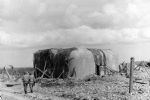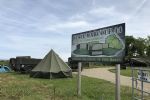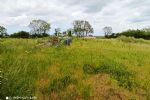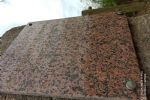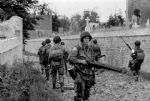Batterie Crisbecq
- >1,1K
- Voir sur la carte
La batterie de Crisbecq (MKB, Marineküstenbatterie) à Saint Marcouf (Manche, Normandie) est sur le secteur Nord de la plage d’Utah-Beach. Elle a été la première batterie à ouvrir le feu sur les forces alliées à précisément 5h52 au matin du 6 juin 1944.
Construite à partir de 1942, la batterie n’était pas terminée le Jour-J, la construction des casemates ayant été retardée suite aux bombardements réguliers à compter d’Avril 1944. Parmi les plus puissantes batteries du secteur, elle comptait 4 canons de 210 mm ayant une portée de plus de 30 Kms.
Durement touchée dans la nuit du 5 au 6 juin par 598 tonnes de bombes, la défense anti-aérienne fut anéantie ainsi qu’un canon de 210 mn. De nombreux soldats également perdront la vie durant le pilonnage. Les parachutistes du 502e régiment de la 101e aéroportée qui avaient pour objectif la batterie de Varreville, et parachutés trop au sud, attaquèrent sans succès la batterie de Crisbecq dans la nuit du 5 au 6 juin 1944. 20 d’entres eux furent prisonniers Un interrogatoire est reconstitué dans une des casemates)
A 5h52 la batterie ouvre le feu sur les navires du secteur d’Utah-Beach, ses canons qui n’avaient pu être réduits au silence lors des bombardements, couleront dans la matinée du 6 juin le destroyer USS Corry et endommageront d’autres navires. Elle fut alors prise pour cible par les cuirassés américains USS Nevada, Texas et Arkansas. Les deux canons de la batterie encore actifs furent réduits au silence à 9h avant d’être remis en état pour l’un d’entre eux le lendemain matin. Le 8 juin les troupes de la 4e division d’infanterie débarquées plus tôt à Utah-Beach attaquèrent à leur tour la position sans plus de succès. En effet face à ces attaques, l’ Oberleutnant Zur See Walter Ohmsen commandant de la batterie de Crisbecq demanda à la batterie d’Azeville voisine de quelques kilomètres, d’ouvrir le feu sur sa propre position pour anéantir l’assaut américain.
Dans la confusion, les américains se replièrent et les allemands firent 90 prisonniers. Les 10 et 11 juin la batterie fut la cible de violents bombardements et Ohmsen reçoit l’ordre de se replier. Il laissa derrière lui 21 soldats blessés et les prisonniers américains. Seuls 78 hommes gagnèrent les lignes arrières plus au nord.
Le matin du 12 juin les troupes US donnèrent l’assaut pour finalement trouver la batterie abandonnée. Ohmsen fut décoré quelques jours plus tard, de la croix de fer pour avoir résisté à l’armada américaine durant presque une semaine. Le génie américain se servira ensuite de cette batterie pour tester la résistance des bunkers aux explosifs, occasionnant plus de dégâts que le pilonnage du débarquement en lui-même
La batterie se compose aujourd’hui de 19 points :
1) Casemate de Type R683 abritant un canon de 210 mm Skoda. L’explosion de cette casemate coûta la vie à une vingtaine de soldats américains.)
2) Encuvement de canon de 155mm.
3) Soute à munition de type 134.
4) Abri type 622.
5) Abri type 502, abri ayant reçu un obus de 105 mm attribué à la batterie d’Azeville.
6) Abri Type 622 abritant la reconstitution d’un interrogatoire d’un soldat américain.
7) Soute type 134 : Cuisine et réserve.
8) Abri type 621 : Infirmerie.
9) Abri léger protégeant la pompe à eau de la batterie.
10) Encuvement canon anti-aérien.
11) Tobrouk .
12) .Abri léger.
13) Encuvement pour canon de 155 mm.
14) Casemate non achevée de type R683.
15) Encuvement pour canon de 155 mm.
16) Soute à munition.
17) Réserve d’eau.
18) Encuvement pour canon de 155 mm.
19) Encuvement pour canon de 155 mm.
Adresse : Route des Manoirs, 50310 Saint-Marcouf Téléphone : 06 68 41 09 04












